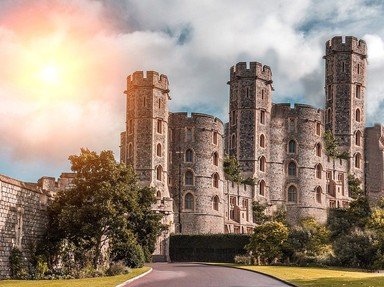Quiz Answer Key and Fun Facts
1. The year 1474 saw an event take place at the Alcázar de Segovia that had a significant impact on the future history of Spain. What event was this?
2. The massive Alhambra complex is probably one of the most famous castles in Spain. It perches above a city in the south of the country. What is the name of this city?
3. Situated in northeastern Spain, Loarre Castle is approximately a two-hour drive from Pamplona. Can you identify the mountain range that provides the backdrop to the castle?
4. Look at the picture of Coca Castle. Which architectural style characterizes this castle located in Segovia?
5. The Royal Palace of Olite is located in the north of Spain. Which historical entity was it a part of?
6. Bellver Castle is one of the few circular castles in Europe. On which island, a hotspot for European tourists, is it located?
7. What is the distinctive architectural feature that gives Peñafiel Castle in Valladolid its unique appearance?
8. Another castle in Valladolid is Castle of La Mota. What is the name of the town that this castle overlooks?
9. The Alcazaba of Málaga was originally constructed under the rule of the Hammudid dynasty and the reign of Yahya I. In which century did this occur?
10. Peñíscola Castle is named after the town of Peñíscola in the Valencian Community of Spain. What does this name refer to?
11. What was the original purpose of the New Castle of Manzanares el Real when it was built in the late 15th century?
12. What river was Burgalimar Castle strategically guarding, the very same river that later winds its way through Córdoba and Seville?
13. Lorca Castle was a key strategic point of contention between Christians and Muslims during the Reconquista. What somewhat surprising structure was located within its walls?
14. Thanks to its classic look, Alcazaba of Almería has served as a filming location for several movies. Which of these films was partially shot there?
15. Ponferrada Castle was built by Knights Templar to protect a famous pilgrimage route in Northern Spain. What is the name of this route?
Source: Author
wellenbrecher
This quiz was reviewed by FunTrivia editor
trident before going online.
Any errors found in FunTrivia content are routinely corrected through our feedback system.

